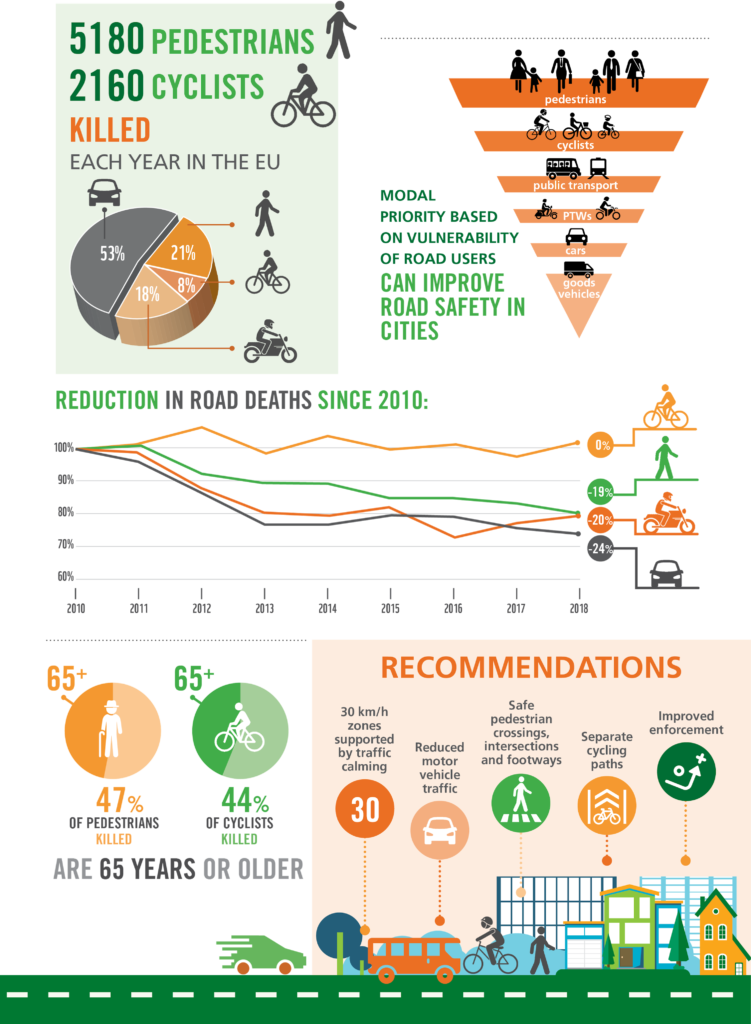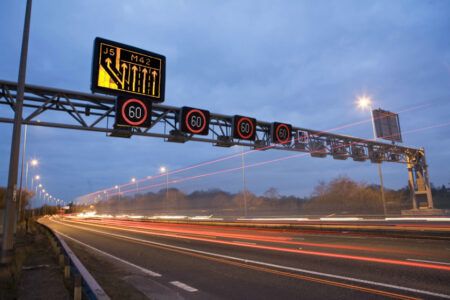The EU, OEMs and governments are failing cyclists as new figures reveal car occupant deaths are reducing eight times faster than the more vulnerable road user.
The European Transport Safety Council (ETSC), whose new report reveals that between 2010 and 2018, at least 51,300 pedestrians and 19,450 cyclists were killed on EU roads, is calling for more action to be done urgently in order to address the pressing issue.
While car inhabitant deaths fell by 3.1% a year over the eight year period, the reduction for cyclists was at just 0.4%
The report’s authors argue that the figure reflects both an increase in cycling across the continent, but also the failure by the EU, governments, local authorities and car OEMs to invest sufficiently in measures to protect those more vulnerable on roads.
The research revealed that half of all cyclists and pedestrians that die on EU roads are over the age of 65. Older people are more fragile and less able to recover from serious injuries. However, Europe’s ageing population needs to stay active and mobile for reasons of health and well-being. ETSC says the challenge is how to improve safety while walking or cycling, particularly for high-risk groups such as the elderly and children.
The report recommends applying a hierarchy for urban planning that prioritises walking, cycling and public transport over private car use, as well as 30 km/h limits supported by traffic calming infrastructure and by enforcement in areas with high levels of walking and cycling.
The authors are also calling on the EU to channel funds into road safety improvements such as the infrastructure modifications needed to support safer city streets and to come forward with a strategy on safe active mobility.
ETSC also wants to see improved data collection because many deaths and serious injuries of cyclists and pedestrians still go unrecorded, as well as Key Performance Indicators to track progress across the EU on improving safety for these groups.
Commenting on the report, Graziella Jost, projects director at ETSC said, “The EU is facing a multitude of challenges: the climate emergency; road deaths and serious injuries; air pollution and obesity.
“Policies that improve the safety of cycling and walking can also make a major contribution to tackling all these challenges.
“Some EU countries, the Netherlands and Denmark in particular, are showing the way forward. If they can do it, so can the rest of the EU.“
The report is published as part of the ETSC Road Safety Performance Index (PIN) Programme which receives financial support from the German Road Safety Council (DVR), Toyota Motor Europe, the Swedish Transport Administration, the Draeger Foundation, the Norwegian Public Roads Administration and CITA – the International Motor Vehicle Inspection Committee.





